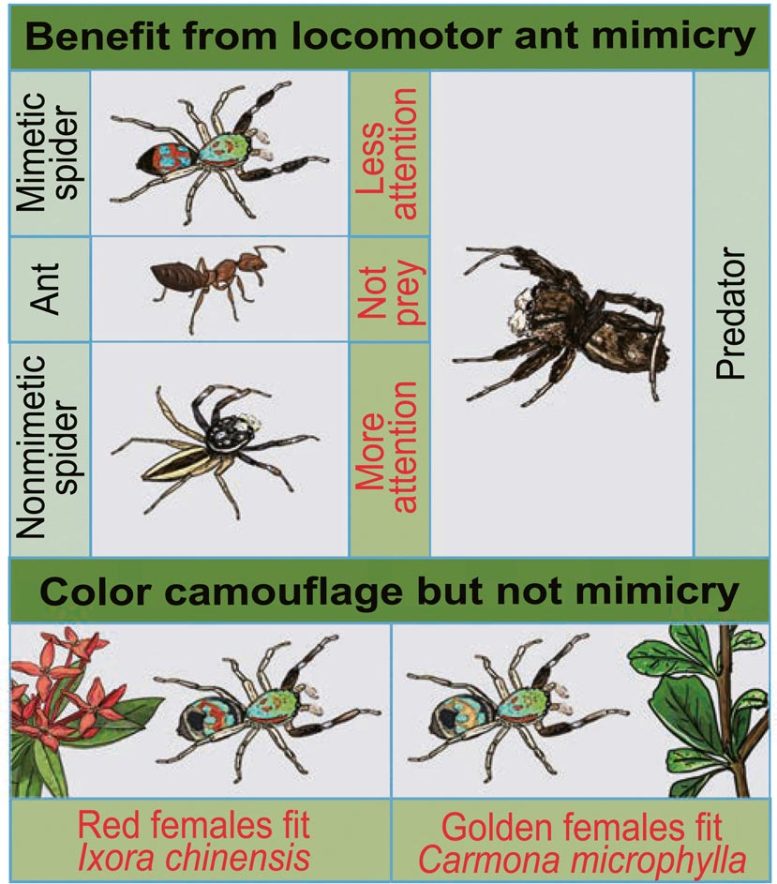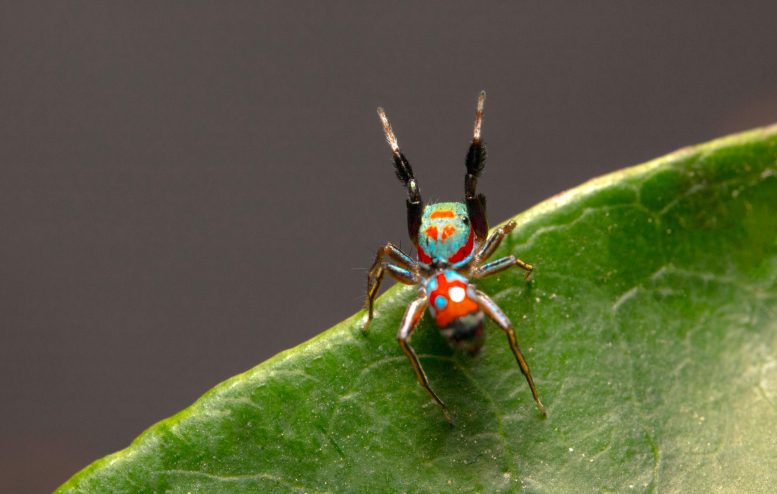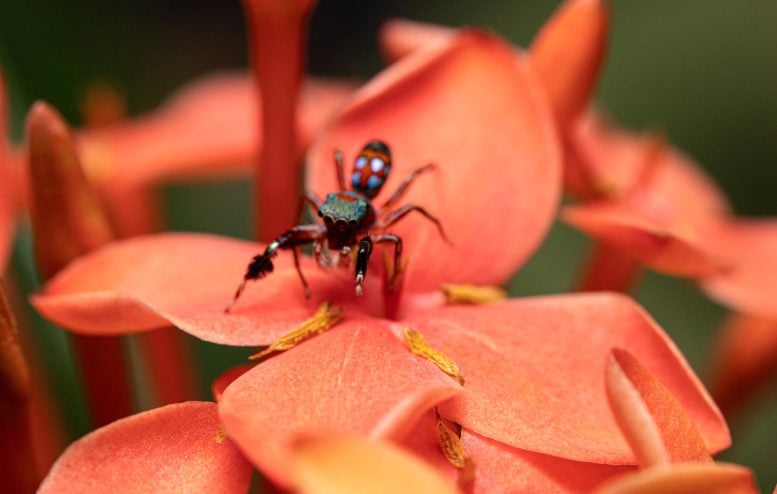Researchers uncovered the survival strategy of Siler Collingwoodi spiders through imperfect ant mimicry, challenging the traditional emphasis on perfect mimicry in predator evasion.
In the immense world of the animal kingdom, a host of species have developed their unique mimicry skills to attract prey or confuse predators. The deceptive act, however, is not always reliable. A recent Peking University study observes a jumping spider’s unlikely story of survival — by copycatting the movements of ants (with some flaws).
Zhang Wei, a zoology researcher at Peking University School of Life Sciences, has recently published a paper in iScience. Her research focuses on how the spider species Siler Collingwoodi imitate certain features of ants as part of their survival tactics.
To understand how ant-mimicry helps these spiders avoid being eaten, Zhang’s research team has collected wild ant-mimicking spiders from four geographic locations in southern China’s Hainan Province.
The research team explored the role of the spider’s brilliant coloration and how it serves as camouflage to protect against predators through trajectory analysis and locomotor characteristics of S. Collingwoodi.


This is a graphical abstract that explains how the jumping spider Siler collingwoodi mimicks the way ants walk to avoid being eaten. The spiders are also brightly colored, which may help them to camouflage with plants. Credit: Zeng et al.
However, S. Collingwoodi’s ant mimicry proves to be imperfect. As shown from the experiment of the spider tested against a mantis and a predatory spider, out of 17 trials, the spider launched five attacks, all of which were toward the non-mimic control. The praying mantises, however, attacked both prey species with equal eagerness.
Throughout the long process of ecological adaptation, animals have developed tactics of mimicry to increase their survival chances. Traditionally, perfect mimicry that features high resemblance in movement patterns has gained widespread attention in the research field as it might result in higher predator deception, but Zhang’s research results show that it may not be entirely foolproof against the animals’ predators.
For more on this research, see Master of Disguise: The Ant-Plant-Spider Triple Threat.
Reference: “Imperfect ant mimicry contributes to local adaptation in a jumping spider” by Hua Zeng, Dong Zhao, Zixuan Zhang, Huize Gao and Wei Zhang, 17 May 2023, iScience.
DOI: 10.1016/j.isci.2023.106747


